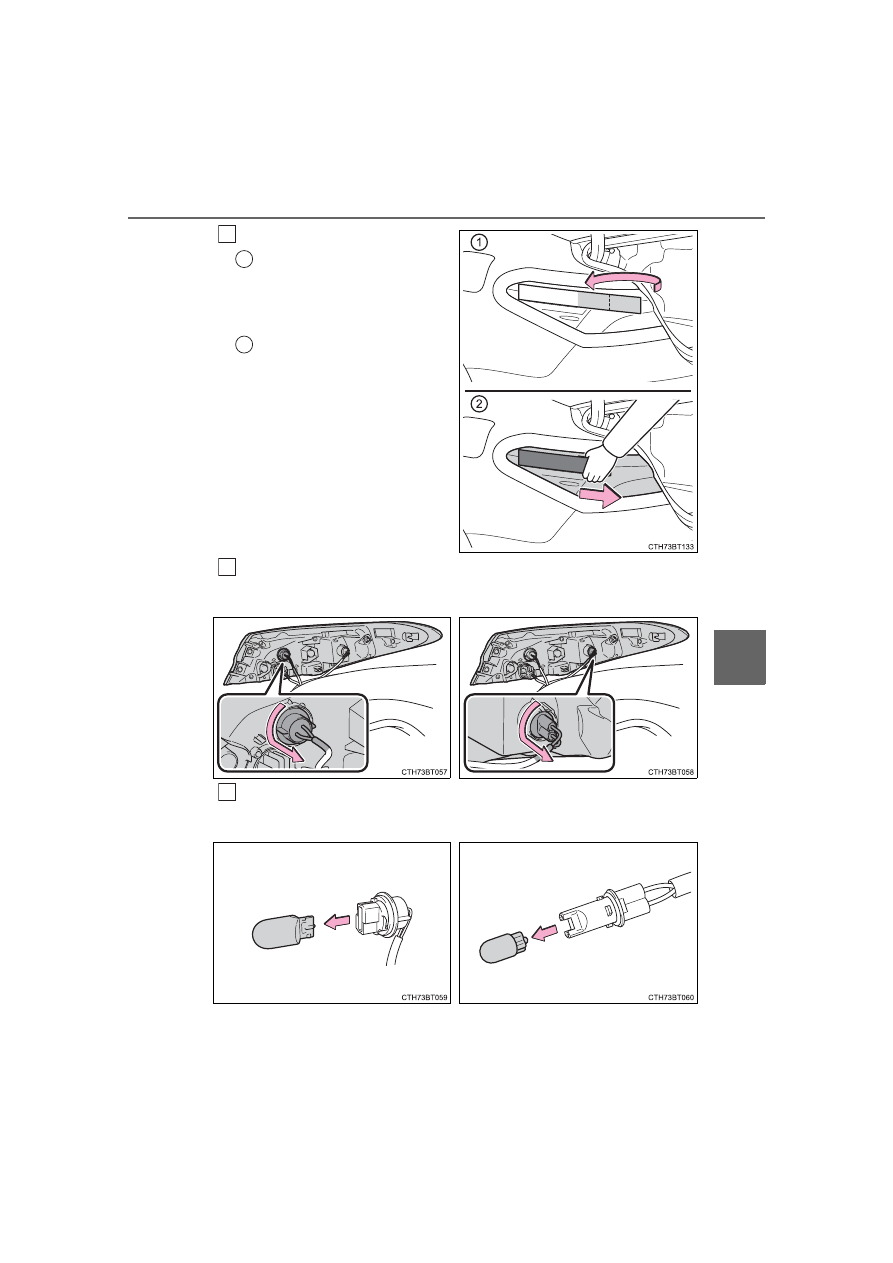Toyota Camry (2019 year). Manual - part 31

481
6-3. Do-it-yourself maintenance
CAMRY_U
6
Mainten
ance an
d ca
re
Remove the light unit.
Attach a long piece of
packing tape to the light
unit and fold the excess in
half.
Hold the folded portion
and pull it toward the rear
of the vehicle to remove
the light unit.
Turn the bulb base counterclockwise.
Remove the light bulb.
4
1
2
5
Rear turn signal lights
Rear side marker lights
6
Rear turn signal lights
Rear side marker lights